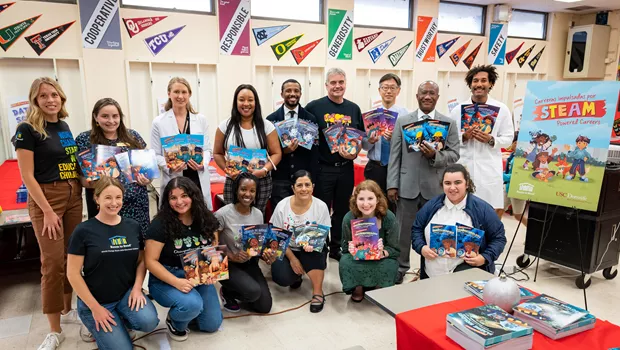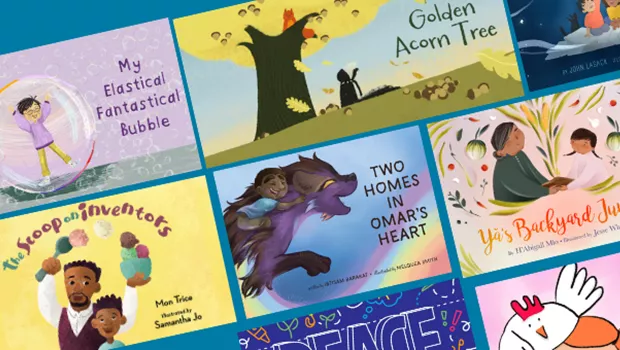Creating essential learning resources: Room to Read publishes new Urdu-language books in Pakistan
January 31, 2024
Today in Pakistan, obtaining a quality education remains out of reach for too many children. According to UNICEF, only 66 percent of children in Punjab completed primary school in 2022. National literacy rates sit around 58 percent and only 13 percent of girls remain enrolled in school by Grade 9, resulting in generations of inequities.
After identifying the unique educational challenges in the country, Room to Read created a multi-year literacy project in Pakistan in 2020, in partnership with the local organization Idara-e-Taleem-o-Aagahi, adapting components of our highly successful Literacy Program to meet the local needs of children. Through the creation of primary school libraries and the development and distribution of local-language children’s books, Room to Read’s literacy support is increasing students’ access to essential learning resources that will build their literacy and foundational learning skills.
Meeting the need for local-language children’s books with Room to Read adaptations
In historically under-resourced communities, children often have limited or no access to local-language, culturally-relevant children’s books — materials that are essential for encouraging independent reading. Through our unique role as a nonprofit book publisher, Room to Read publishes and distributes an array of quality children’s books to increase students’ access to exciting reading materials, ensuring they can build a habit and love for reading.
So far in Pakistan, Room to Read has adapted and translated children’s books in Urdu, Dari, Pashto and Sindhi, helping to broaden children’s access to books they can understand. To date, we have distributed more than 655,000 of these adapted local-language books to Room-to-Read-supported school libraries and partner programs across the country.
Developing a Room to Read-original Urdu-language book collection
Having translated and adapted previously published children's book titles, we’re now thrilled to share that our first-ever Room to Read-original Urdu-language children’s book collection is making its way to publication and distribution in Pakistan. Developed through a Room to Read Writers’ and Illustrators’ Workshop in Pakistan, which brought together the diverse creative talents of 30 local authors, artists and book creators, the collection contains 15 titles that tell a range of stories.
Here are just a few:
“Oon ka Jadu. Hawwa aur Shalai ki Kahani” (“The Magic Threads: The Tale of Hawwa and Shalai”) written by Farah Shah and illustrated by Abeer Kasiri, tells the story of Hawwa and her lamb, Shalai. A curious child, Hawwa is intrigued by Shalai’s wool, and learns about the magic of turning wool into cozy coats. When winter comes, she proudly wears her favorite woolen jacket, enjoying the season with Shalai.

A spread from “Oon ka Jadu. Hawwa aur Shalai ki Kahani” (“The Magic Threads: The Tale of Hawwa and Shalai”) written by Farah Shah and illustrated by Abeer Kasiri.
In “Chutki,” written by Obien Mayo and illustrated by Maryam Shehzadi, Chutki the monkey has a garden filled with fruit trees. Despite having many fruits to choose from, Chutki only eats bananas. One day, something strange happens: the bananas jump from the banana tree! They bounce through the garden, teasing Chutki as she chases after them. Finally, hungry and without her favorite bananas to eat, Chutki reluctantly tries the other fruits in her garden, and realizes that they, too, are delicious.

An illustration from “Chutki,” written by Obien Mayo and illustrated by Maryam Shehzadi.
In “Uff! Chor Kaun?” (“Thief Exposed”) written by Mona Azhar and illustrated by Wajiha Rafay, a family moves into a new house with a mango tree in the yard. As they settle into the house, they find that items keep disappearing — first ribbons, then socks and more. They cannot imagine what might have happened to their belongings, or who might have taken them. Finally, they discover an unexpected thief: a crow in the mango tree, playfully decorating his home with ribbons, socks and more.

A spread from “Uff! Chor Kaun?” (“Thief Exposed”) written by Mona Azhar and illustrated by Wajiha Rafay.
Published in partnership with three local book publishers — the National Book Foundation, Alif Laila Book Bus Society and Maqbool Books — 90,000 copies of Room to Read’s new Urdu-language titles will be distributed to 34 Room to Read school and classroom libraries in Lahore and Bahawalpur districts of Punjab Province, and to partner organizations across Pakistan. These original stories will provide young readers with both a language they understand and content that reflects their own lived experiences and cultures, helping to engage children in the act of reading and inspire a lifelong interest in learning.




